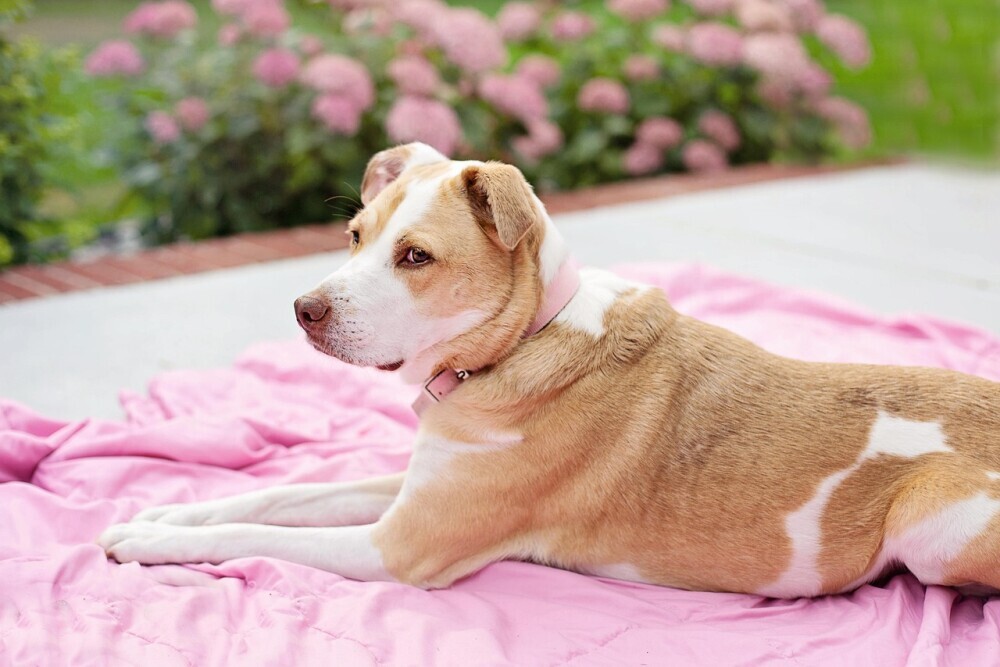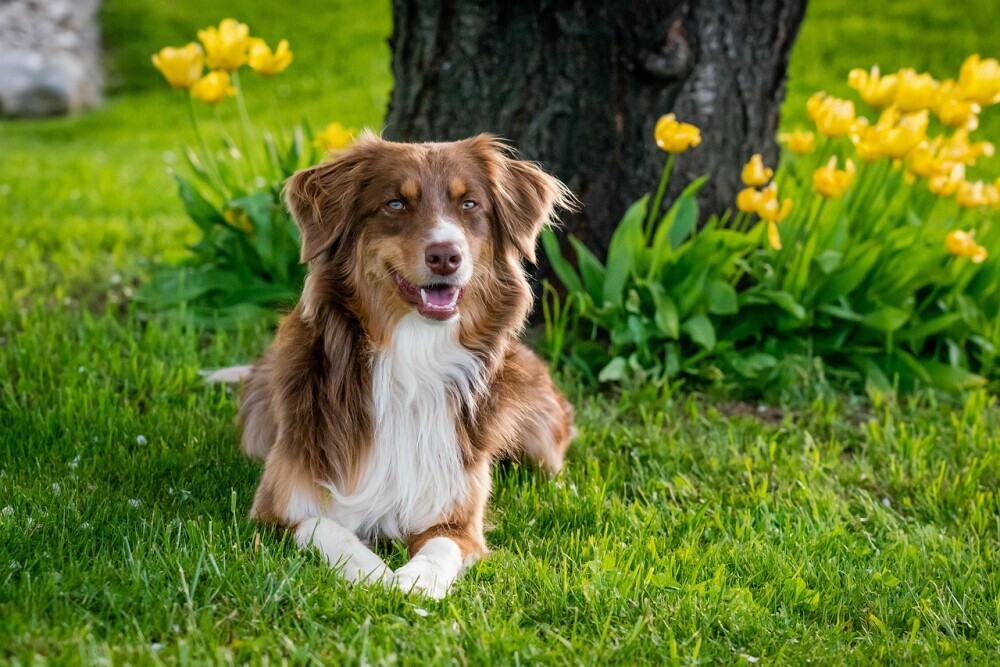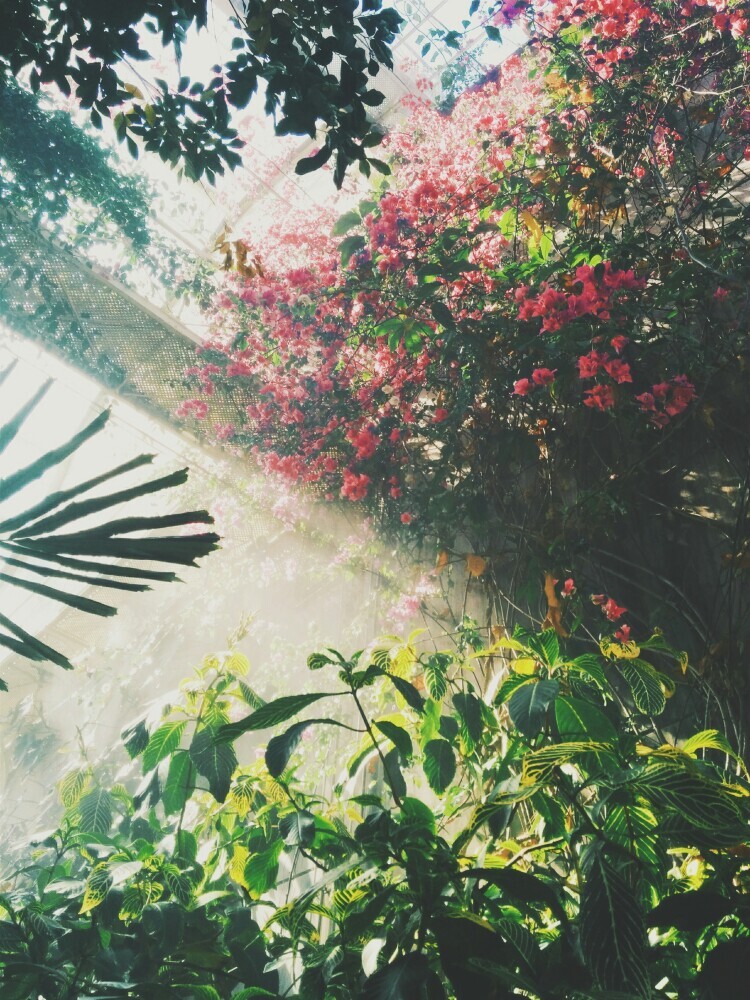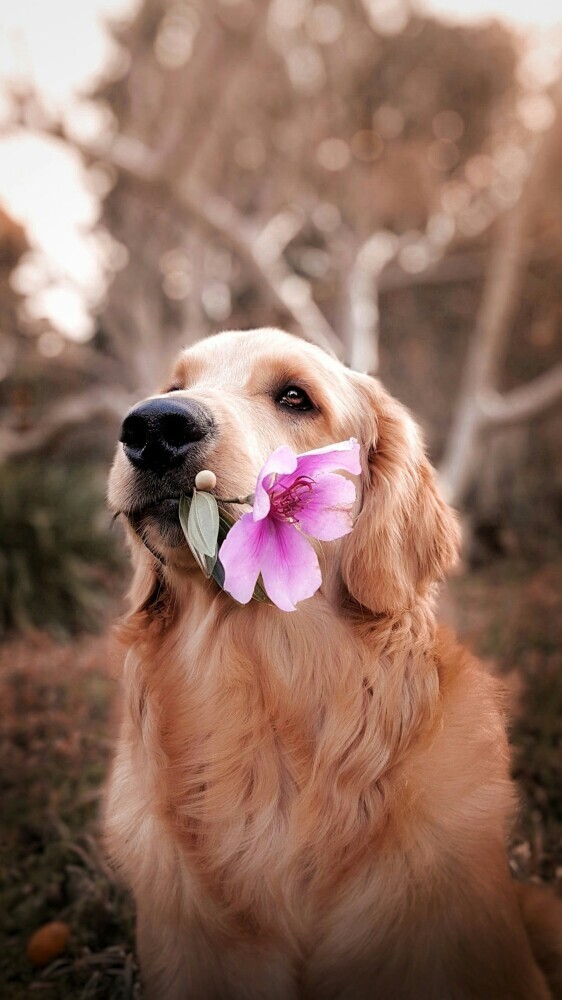
Every dog owner knows that once a pup steps paw in the garden, adventure awaits. Gardens are the ultimate playground, filled with intriguing smells and curious critters. But while a garden is full of wonder, it’s also a minefield of potential hazards for our furry buddies. This is why we wanted to offer a few tips to help protect your garden and your dog.
Dogs have this knack for sniffing out the unexpected, and while they’re on their mini adventures, they might munch on something they shouldn’t or trample over your prized petunias. It’s all in the name of fun for them, but these seemingly innocent games can lead to broken plants or, worse, a trip to the vet. Sometimes curiosity can end in bad results.
Safety is the name of the game when it comes to cohabiting with our four-legged friends in the backyard. Dogs are naturally curious, making it crucial to understand what kind of trouble they can get themselves into. From chewing on electrical cords to digging up bulbs, understanding these behaviors is step one in preventing them.
Not only can dog-proofing save your garden from destruction, but it can also keep your pup safe from hidden dangers like toxic plants, sharp objects, or harmful chemicals. It’s all about creating an environment where both your flowers and furballs can thrive peacefully together. Let’s get into how we can keep your garden safe.

Key Strategies to Dog-Proof Your Garden
Building a dog-safe garden starts with some clever thinking and a bit of elbow grease. One of the first things to tackle is putting up a solid fence. Dogs have this incredible ability to squeeze through any gap you didn’t know existed, so make sure your fencing is secure and tall enough to thwart even the most ambitious jumpers. Don’t underestimate their slickness, make sure that your garden is protected from all angles.
Sometimes, dogs just need a clear path to follow. Laying down some designated pathways can leave both your pup and your plants happy. Gravel and bricks can come handy here, offering a sturdy surface for those playful paws to run along, away from your delicate greenery. Guiding them away from your garden can keep you from having to worry every time your pup goes outside.
A great way to keep dogs from getting up to no good is by creating areas specifically for their play and rest. Think about setting up a little doggy zone with toys and even a small sandbox for digging. This gives them a dedicated spot to go wild and keeps them busy with fun they can call their own. Make another part of your yard more attractive and entertaining than your garden.
Distraction can be a gardener’s best friend. By diverting your dog’s attention with enticing toys or even a small dog-safe water feature, you can keep them entertained and out of mischief. Everyone wins when your pup’s energy is focused where it won’t cause chaos. Give your dog something that will distract it from your plants.
Looking at the garden from your dog’s point of view can help you see potential trouble spots before they become an issue. Getting down to their level gives you insight into what might catch their attention and lets you address problem areas before they become their next target.

Safe Gardening Practices: Plants to Avoid
Gardens can be a hidden treasure trove of plants that are a no-go for dogs. It’s like Mother Nature’s own secret list of things to keep away from your four-legged pals. From the fragrant allure of lilies to the tempting chewiness of daffodils, many common garden beauties are actually unsafe for our curious companions.
Start by familiarizing yourself with plants that are toxic to dogs. Lilies, azaleas, foxglove, and many others can cause anything from a mild tummy ache to serious health issues. When planning your plant selection, it’s a good idea to lean toward dog-friendly options like lavender, rosemary, or sunflowers, which add beauty without the worry.
If you’ve already got plants in your garden that might be harmful, consider moving them to areas that are off-limits to dogs or replacing them altogether. Raised beds or hanging planters can also provide a creative solution, keeping those blooms out of paw’s reach.
Education is a crucial element in keeping your garden safe and your dog healthy. Make sure everyone in the household knows which plants are off-limits for your pup and teach them to recognize the signs of plant poisoning, just in case your pooch gets into something they shouldn’t.
The appropriate gardening strategy involves both prevention and a bit of homework. Once you know which plants to avoid, you can focus on creating a safe, happy place for you and your dog to enjoy together without worrying about any of nature’s hidden traps.

Maintaining a Dog-Friendly Garden
Keeping your garden dog-friendly is not a one-time deal. It’s about staying on top of things and being ready to adjust as the seasons change. With every shift in temperature or weather, new challenges can pop up. Plants behave differently, and so do curious pups, sometimes finding new areas of interest or trouble. Every spring you will want to care for your garden and make sure that your fence is still stable.
Consistent maintenance is key. Regularly check fencing and barriers for wear and tear or damage. A little patchwork here and there can prevent small problems from turning into big ones. Keeping pathways clear and ensuring toys and play areas are in good shape can go a long way in diverting attention from your plants.
Dogs are creatures of habit, and a gentle reminder here and there can help them remember which spots are theirs and which are for admiring from a distance. Use training techniques that encourage them to stick to their play zones and respect the garden borders. This way, they learn there are places for them and a no-go zone like the flower bed you’ve been nurturing.
When you have a garden everyone can enjoy—without chewing or trampling—it becomes a space of harmony. It’s a bit like orchestrating nature and pets into a lovely duet, where they both contribute to the beauty of your shared home. Let your dog and your garden live harmoniously together…by keeping them apart.
A well-maintained garden is like a canvas. It’s constantly evolving, with every little weed or fallen leaf a new brush stroke. By staying involved and regularly checking in, you ensure your garden remains a safe haven for both your plants and your pets.
